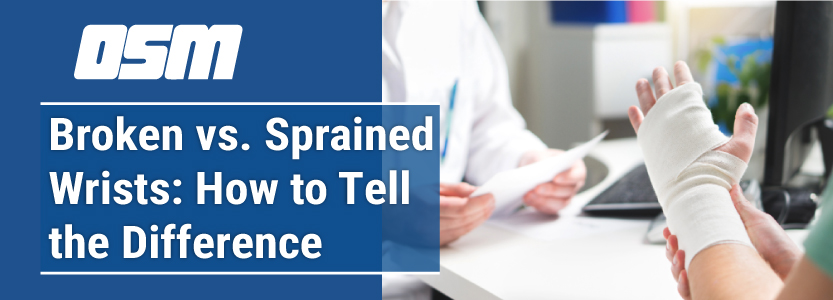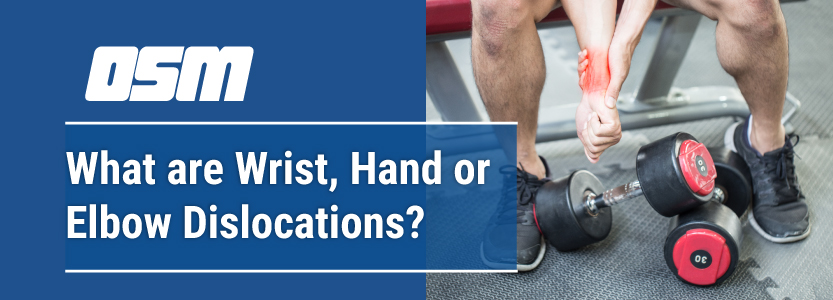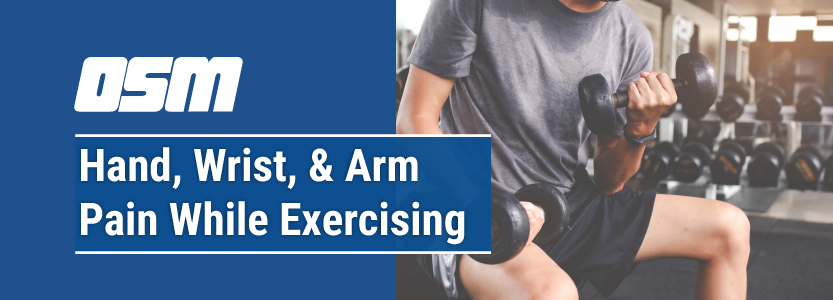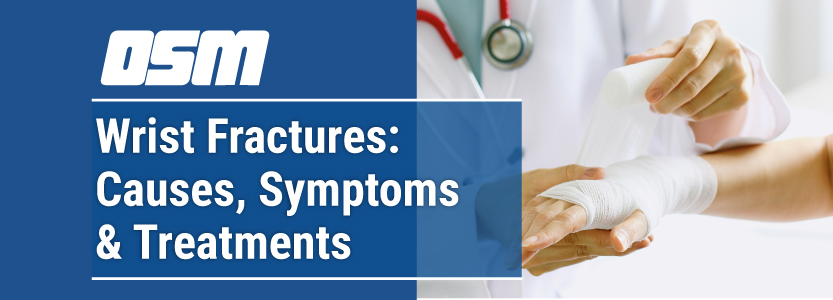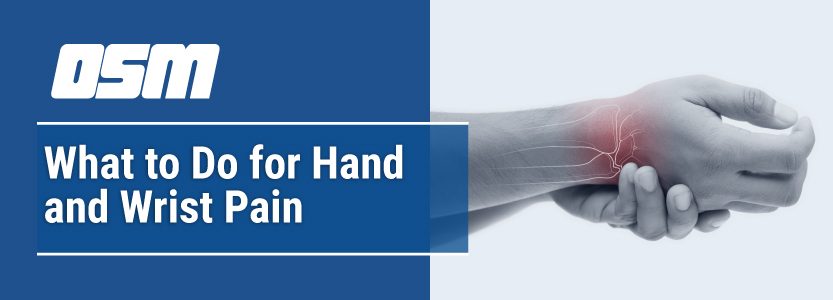Article featured on HealthPartners
Wrist injuries are incredibly common. They can happen after a fall, or a forceful hit or sudden twisting of the wrist. For example, you might slip on some ice in your driveway and fracture a bone when falling on an outstretched hand. Or your little hockey player might block a goal and, unfortunately, score a sprained wrist.
But when a wrist injury happens, it may be hard to tell how serious it is. So, how can you tell the difference between a break and a sprain?
Both sprains and breaks need immediate care, but the treatments they need aren’t always the same. Your wrist may need more or less attention depending on the seriousness of the injury. Below, we share key differences between broken and sprained wrists, and when to see a doctor.
What’s the difference between a broken wrist and a sprained wrist?
The difference between a break and a sprain is related to your anatomy. If you have a sprain, it means you have damaged one or more ligaments – the tough bands of fibrous tissue that connect your bones to each other.
If you have a broken wrist, it means that one or more bones in your wrist have fractured or shattered. Your wrist joint is made up of eight small bones around your wrist (the carpal bones) and the end of your forearm bones (the radius and ulna).
So, what is a fractured wrist? A fracture is the medical term for a broken bone – which means a fractured wrist is the same as a broken wrist.
How can I tell if I broke or sprained my wrist?
For starters, broken wrists tend to hurt more than sprained wrists. If your wrist is broken, you’ll likely feel severe pain. Sprains can cause some tenderness and pain, but sometimes they may not cause much discomfort at all.
Another difference is how much you can move your hand. With a sprain, you should be able to move your wrist in a normal range of motion (but it will be painful). If you have a broken bone, you probably won’t be able to move your wrist very much.
Still, it can be hard to tell the difference between the injuries since both come with bruising, swelling and hand weakness. It’s also possible to have both a fracture and a sprain – and the resulting symptoms – at the same time. The only sure way to tell the difference between a fracture and a sprain is to talk to a doctor or hand specialist.
Fractured wrist symptoms vs. sprained wrist symptoms
|
Fracture |
Sprain |
| The sound your wrist makes at the time of injury |
Grinding, crunching or cracking |
Often silent, sometimes there’s a popping sound |
| Hand strength after injury |
Hand will feel weak |
Hand will feel weak |
| Range of motion after injury |
Only able to move your wrist a little or not at all. Finger movement may also be affected. |
Can move wrist (but it will be uncomfortable to do so) |
| Swelling |
Gradual and mild |
Quick and significant |
| Wrist deformity after injury |
Wrist may look deformed or have an unnatural bend (but it’s also possible to have a fracture without noticeable deformity) |
None |
What should I do if I’ve injured my wrist?
One of the first things is to decide if you need to see a doctor or if you can treat your injury at home.
If your hand is numb or your wrist is bent in an unnatural way, head to orthopedic urgent care. If you think your wrist is sprained, it’s okay to wait to see a doctor and treat it at home. But if your wrist doesn’t feel better in a day, make an appointment with a hand specialist or walk in to one of our convenient orthopedic urgent care locations.
Not sure? Schedule an appointment with a hand specialist – they’ll be able to tell if your wrist is sprained or broken, and what you need to do to take care of it.
How long does it take for a sprained wrist to heal compared to a broken wrist?
The more pain you have with your injury, the longer it will take to heal. Sprained wrists can take anywhere from 2-10 weeks to heal.
Broken wrists can take a few months (or more) to heal fully – with most healing happening between 6-12 weeks.
How to care for your injured wrist at home
If you have a wrist injury, there are a few things you should do to reduce pain and get on the path to healing. If you have a mild sprain, these home treatments may be all you need to recover. But for breaks and more serious sprains, you’ll likely need medical attention.
- Immediately – Stop doing anything that causes you pain, and not just for the day. For example, if you have a sports-related wrist injury, you’ll need to stay on the sidelines until you’re healed. Also, keep your jewelry off until the swelling is completely gone.
- For the first 24 hours – Apply ice for 15-20 minutes at a time. Also, wrap a compression bandage around your hand to help with swelling.
- For the first three days – Elevate your hand as much as possible, including overnight. This reduces blood flow to the hand and can decrease swelling.
Medical treatments for broken wrists and serious fractures
To diagnose your injury, your doctor will do a physical examination and possibly take X-rays. Your doctor may also do other imaging tests such as a CT scan or an MRI for more information before making a diagnosis or recommending the treatments that will work best for you. Possible treatment options include:
A cast or splint
Movement makes it harder for bones to heal. A cast or splint holds your wrist in place so that the broken bone can heal. So, what’s the difference between a cast and a splint, and how do you know which you need?
If your fracture isn’t too bad, a splint may be enough to protect your wrist. Splints come ready made and can usually be removed and adjusted. Casts provide greater support for severe injuries. They are custom made – usually from plaster or fiberglass – to fit your wrist and protect your injury.
How long you’ll need to wear a cast or a splint depends on your injury. For a mild fracture, it might be a week or two. For more serious injuries it might be months.
Do you need a cast for a sprained wrist?
No, you don’t usually need a cast for a sprained wrist. It’s more common for a doctor to recommend you wear a splint for 2-10 days. After this period of rest, you should begin moving your wrist as much as possible (as long as it’s not painful). Movement brings fluids to and from the injured area – something that’s necessary for healing.
Still, there are times when a doctor may recommend a cast for a sprain. For example, if moving the injured tendon or ligament causes severe pain or the doctor is concerned that improper healing could cause permanent changes in wrist function.
If you wear a cast for a sprained wrist, it’s usually for 3-4 weeks, but it can be for as long as 8 weeks.
Medications
Nonsteroidal anti-inflammatory drugs (NSAIDs) like ibuprofen, aspirin and naproxen sodium are great for temporary pain relief. If you have an open fracture and the bone has broken the skin, your doctor will likely prescribe antibiotics.
Hand therapy
As your injury heals, you’ll be able to move it more. At this point, you can start some exercises. Our hand therapists can help put together a tailored plan to help your hand regain the strength and abilities it had before injury. As part of therapy, your hand therapist may use ultrasound, manual therapy, kinesiology taping or neuromuscular re-education techniques.
Surgery
Your hand surgeon may need to implant plates, screws or rods to keep your bones in place while they heal. This is usually only necessary if:
- Your bone broke in multiple places
- The bone has pushed through the skin
- The injury has damaged or could damage the surrounding ligaments, nerves, blood vessels or joints
You may also need surgery if your bone doesn’t heal properly after a break.
Get the help you need for your injured wrist
Wrists with mild sprains can usually be treated at home, but broken bones and severe fractures will heal best with medical attention.
If you have symptoms that could be from a broken or sprained wrist, make an appointment with a hand therapist or your primary care doctor. They’ll be able to tell if your wrist is sprained or broken, and what you need to do to get better.
If your wrist is obviously broken or your hand is numb, head to orthopedic urgent care to have it looked at right away.

